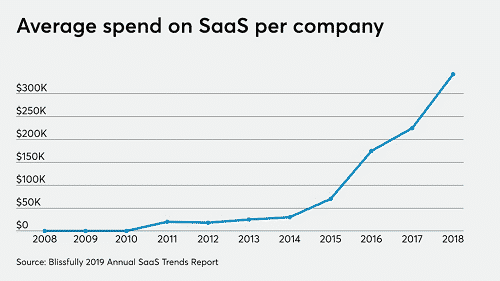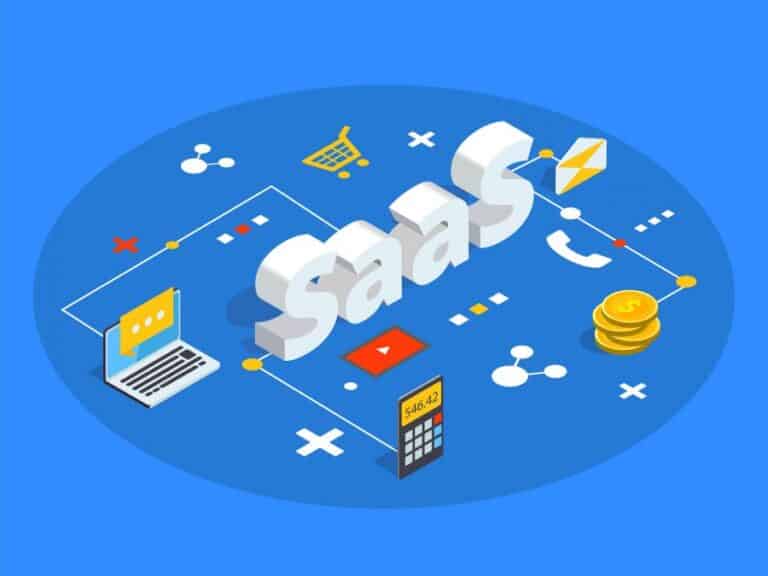Software-as-a-Service (SaaS), sometimes known as cloud-based software, is now widely available. Those who are investing in data analytics chose cloud-based software to be one of their top three innovative technology investment areas.
This usually makes the systems highly efficient and cost-effective for any budget.
Zendesk and even Facebook are examples of SaaS. This is not the same as infrastructure as a service or platform as a service.
What will we see here?
What is SaaS (Software as a Service)?
Software as a service (SaaS) is a method of delivering software. Through these, you can maintain programs by a third-party provider. And made available to authorized end-users via the Internet. Users no longer need to download the application to run it locally on their PCs; instead, they may just access it using a web browser.
This offers up a world of opportunities for firms to scale and reduce the time to market. As a result, it’s hardly surprising that SaaS has become as common as cat videos on YouTube.According to Gartner’s most recent predictions for public cloud service revenue, SaaS remains the largest cloud industry.

And the explanation is simple. SaaS is a cost-effective and feasible solution for many types of businesses. Particularly in an era when digital requirements and client needs are constantly evolving, and cloud delivery offers the agility to adjust rapidly. Even though SaaS is extremely popular in certain areas, there are still worries, risks, and misconceptions.
How to decide between SaaS and on-premises software?
The very first step in addressing this issue is to assess your company’s complexity. Address the following questions about your company to help you decide if SaaS is the right option:
- How specialized is your company in comparison to others in its industry?
- Did off-the-shelf items meet your requirements?
- What degree of software customization do you expect to require?
- Another thing to think about is your budget. As previously stated, SaaS subscription payment methods allow organizations with limited resources. To extend the cost of ownership across periods, allowing even tiny businesses to buy sophisticated, modern software.
- Buyers no longer have to choose between flexibility and efficiency.
- Today, most cloud-based software can provide the same functionality as an on-premise version.
The larger issue is data ownership. The vast majority of providers still place information in the hands of the end-user. But read the service contract carefully to understand how personal data will be handled.
A few industries have been slower to adopt cloud services (for example, many factories still use traditional ERP deployments), but when it comes to new technology, the cloud has become the new default.
Origin of Software as a Service
John McCarthy is a notable computer scientist who received the Turing prize for his research in artificial intelligence (AI). Notably stated in a 1961 address to MIT students, “evaluation may someday be structured as a public utility”. To put it another way, cloud storage began as a common resource of computing.
While the concept has been around for a while, the internet technology designed to maintain SaaS only became available in the late 1990s. That’s when firms like Salesforce—founded explicitly to build cloud software—began delivering classic enterprise solutions like customer relationship management (CRM) via a SaaS model.
Initially, the enterprise software industry did not take SaaS seriously. However, over the last decade, there has been substantial expansion and acceptance of SaaS, with a new set of enterprises embracing technology for the first time. Cloud adoption is greatly outpacing that of other cloud technology sectors, such as Platform-as-a-Service (PaaS) or Infrastructure-as-a-Service (IaaS).
Can we make changes in SaaS (Software as a Service)?
Modern web-based software is efficient enough to be customized. Not just for specific commercial purposes, but also for specific users. Buyers can transform the appearance and feel of the application by customizing the user interface (UI), as well as changing particular parts, such as metadata, to change what data shows. Several business process functionalities can also be toggled on and off at will.
Users can frequently customize their workplace, such as a dash or task list, to display exactly the data they need to view and maximize their work style. Both on-premise and SaaS systems may now be completely tailored for each customer. But cloud-based systems still provide significantly more flexibility and efficiency for the average business.
Who controls the data in your Software as a Service?
As in the vast majority of circumstances, you retain ownership of your data while using a cloud-based solution. The majority of service level agreements (SLAs) guarantee your company’s ownership of the goods stored on the vendor’s server, as well as your entitlement to access the data.
Most SaaS contracts also include pre-paid contingencies that ensure you have access to your data if the provider goes out of business and guarantee that you own that data.
Additionally, most SaaS suppliers will allow you to export and backup up your data locally at any time. It’s rare for a provider to insist on retaining ownership of customer data. If you find something like this in a clause, don’t sign on the dotted line. This SLA is a critical and somewhat complex contract. You should communicate with your partners before committing to the purchase of a new solution.
Is your information secure in the cloud?
Clients are cautious of cloud security, therefore software suppliers work hard to demonstrate how to secure data on their servers. Many SaaS providers run and keep their software installations and data in high-security public cloud services.
For most businesses, data is more vulnerable in-house, where there is less funding allocated to IT security, and workers or others may accidentally leak data or establish security flaws. According to Gartner, through 2023, at least 99 percent of cloud security breaches will be the user’s mistakes.
The discussion over securing data for ERP systems continues, yet it’s among the last software areas to suffer from severe security flaws. Instead, as per 90 IT system administrators. Negligent personnel, inadequate remote work security, and code defects were among the top security dangers.
In reality, data security is unaffected by whether the server is just next to you or in another city. SaaS businesses may invest significantly more of it in cybersecurity, backup, and support than any small and medium enterprise.
What are the drawbacks of the internet and SaaS (Software as a Service)?
The main disadvantage of SaaS is that it is dependent on a reliable internet connection. However, unless your company is located in a distant place, your internet access would be more than adequate to use today’s SaaS services.
While many people feel that on-premise systems are more reliable, no system is completely immune to interruption. On-premise software is vulnerable to power outages, hardware breakdowns, and a variety of other dangers. As a precaution, several SaaS suppliers have created an “offline” capability that allows customers to continue working even if the internet goes down. When a stable connection is restored, all data is synced to the system.
Aside from the internet connection, several purchasers are concerned about compliance with other operating systems. Most are given via internet browsers and are completely OS agnostic. So you won’t need to worry about that. At most, you’ll need to install a different web browser for your SaaS system.
Conclusion
Software as service models isn’t getting more popular — to the point where few people inquire what is SaaS — as a result of clever marketing or developers imposing them on clients. They are grabbing the majority of the business application market share since they give significant benefits to both developers and users. While transitioning to a SaaS model may necessitate a rethinking of your business plan, there is a good potential that the change will vastly improve your chances of long-term success.
















